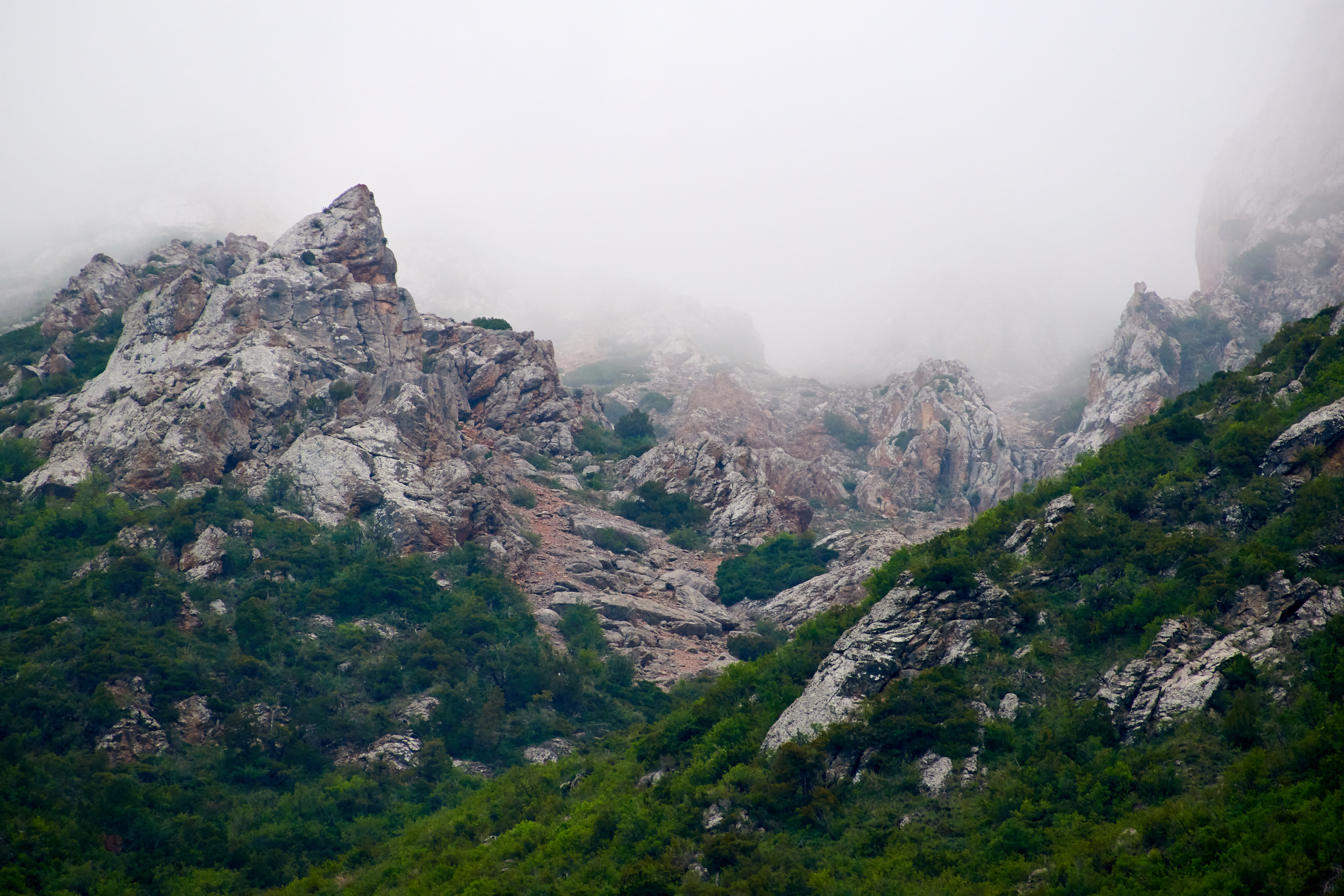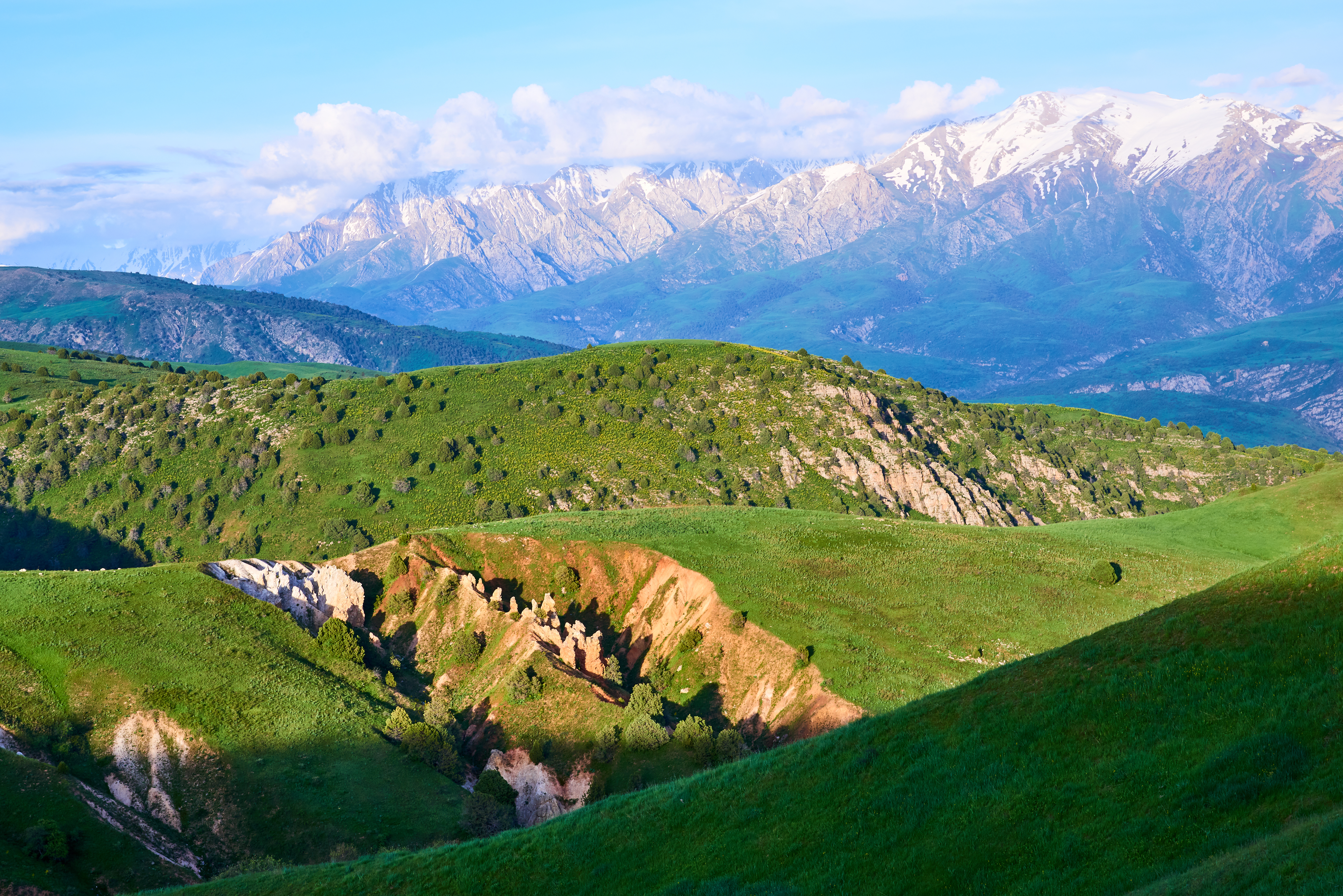Western Tien-Shan Kazakhstan
Around the world, whenever somebody bites into an apple, they are eating a fruit that can trace its history back to the Western Tien-Shan mountains of Kazakhstan. It was here, centuries ago, that people domesticated a wild species of apple called Malus sieversii. Sweet and juicy, it was popular with the traders who travelled along the Silk Road in their caravans. So, they took the apples with them on their travels, selling them to new lands or eating them and discarding the seeds on the roadside. Over time, apples became cross-pollinated with wild species worldwide, leading to the genesis of the thousands of edible apple varieties you find today. Researchers believe about 46 percent of a modern domestic apple's genes today can be traced to Kazakhstan's Malus sieversii apples.

Today, there are still orchards of these original apples and other domesticated goods, including apricots, pistachios, nuts, and plums. But they are just one of the natural wonders in Kazakhstan's Western Tien-Shan mountains. The three protected areas in the World Heritage Site - Karatau Nature Reserve, Aksu-Zhabagly Nature Reserve, and Sairam-Ugam National Park - each exemplify magnificent biospheres. With altitudes ranging from about 1100 metres to more than 4200 metres, they offer various landscapes, including imposing mountains, plateaus, steep slopes, foothills, and woodlands. From the peaks of the Tien Shan Mountain range, glacial runoffs tumble down the slopes to provide the ever-changing waterways that feed the wild fruit and nut species.
Each ecosystem protects plant species and enables opportunities for globally significant research. For instance, within Sairam-Ugam National Park, scientists have recorded 1635 species of plants, 35 of which are endemic. The parks also support endangered and rare species of birds, mammals, and insects. The Western Tien-Shan Mountains include the resident endangered snow leopard, Himalayan brown bear, Tien-Shan Argali, Indian crested porcupine, and Menzbier's marmot.
The untouched landscape ebbs and flows with contrasting temperatures and impactful climatic seasons. There are undeniable centres of origin to ancient inhabitants. Each unique natural refuge is committed to preservation and development while simultaneously facilitating remembrance for human existence.
The Western Tien-Shan sites of Kazakhstan
The three protected areas in Kazakhstan's Western Tien-Shan offer something unique, from the landscapes to the fauna and the rich heritage of the people who have traversed it for generations.
Karatau Nature Reserve
Karatau Nature Reserve is situated directly in the Karatau mountain range of Kazakhstan. Being deeply embedded next to desert zones has created isolation from the Western Tien-Shan mountains. Still, the region's lowlands, midlands, and uplands provide the ideal habitat for endangered species. This isolation has become a focal point for the ancient genesis of rare flora and plant systems. Rapid flowing rivers sculpt deep valleys and impassable gorges into watershed basins. The Red Book of Kazakhstan indicates protections for threatened species of Corsac foxes, Indian crested porcupine, beech marten, and Karatau argali.
Karatau Nature Reserve continues to offer complex biodiversity of endemic botanical species, and the history of cultural evolution extends from the Palaeolithic Age to the Neolithic Age. Cascading waterfalls drastically influenced the cultural and ecological footprint. The surviving isolated biota reveals primitive gene pools, medically essential plants, and global geographical distributions. Other notable animal residents include the Steppe polecat, jackal, wolf, African wildcat, demoiselle crane, and Eurasian eagle-owl.
Aksu-Jabagly Nature Reserve
Aksu-Jabagly Nature Reserve is the oldest nature reserve of Central Asia, with mountainous landscapes of intense serenity and mystical radiance. Ecosystems highlighted by the 500-metre-deep Aksu Canyon, the Zhabagly-Tonkeris-Kaskasu International Hiking Route, and pastel Greig wild tulips. Modern travellers follow the roads laid by Silk Road caravans, nomadic hunter-gatherers, and endemic animal species to the region.
Springtime feeds the Kaufman tulips, St John's wort, yarrow, and chamomile. This attractive landscape melds scenic vistas, picturesque ecosystems, and historical sites. Ancient petroglyphs in deep-seated gorges showcase histories and stories from residents of millennia ago, who were among the first to cultivate wild apples, grapes, and tulips.
Exploring Aksu-Jabagly Nature Reserve may include sightings of rare endangered snow leopards, legless grass lizards, bluebirds, and golden eagles. A prime amalgamation between humanity and wilderness has created prosperity and resilience in Kazakhstan's oldest nature reserve.
Sairam-Ugam National Park
Among the mountainous region of Sairam-Ugam National Park stands juniper forests and open woodlands. The National Parks provides three distinct territories: protected zones (closed to the public), tourist zones, and recreation zones. The climates, ranges in altitude, and alpine waters create an immaculate agricultural area for nut and fruit trees. Walnut, pistachios, apples, plums, cherries, and almonds are all under protection and management. Deep into the protected Western Tien-Shan ranges include lakes, rivers, and glaciers. Predatory species of bear, world, jackal, birds of prey, and endangered snow leopards roam the expanse searching mountain goats, roe deer, and wild boar.

Much of the territory is closed to tourist activity. Yet, ten routes throughout the park support horseback riding, hiking, yurts, and camping to reach some of the highest points. Horseback trekking through rugged terrain, breathing fresh mountain air, and immersing in crystal clear waters make UNESCO-designated Western Tien-Shan mountains magical. Its rich history, intertwined with agricultural biodiversity and rock art, leaves an indelible image of living heritage.

Visiting Kazakhstan's Western Tien-Shan nature reserves and the national parks takes guests into Silk Road mountain ranges through river basins and steep cascading ravines. The mountain system offers views of cascading waterfalls, and amongst the cliff faces are petroglyphs from ancient inhabitants. Seasonal weather patterns bring glacial snow melts into undulating peak valleys. At the same time, spring waters run from mountain ranges to provide the ideal biodiversity hotspot. Endemic arboreal shrubs and remaining plantations of wild apples, apricots, pistachios, nuts, and plums populate the landscape. You can follow numerous trails to explore the parks for hours - or even days.
How to get there
Karatau Nature Reserve: Feel free to visit any time of the year, with the best time being April through September.
Aksu-Zhabagly Nature Reserve: A minibus in Shymkent is available, but the minibus to Tyulkubas is more reliable. From Tyulkubas take a taxi to Zhabagly village, which will take 2 hours. The Shymkent to Almaty train can take you in 2 hours to Tyulkubas train station. Before choosing this option, secure a ride in advance with a host, taxi, or third party when you arrive at the station. There are limited or no taxis available.
When to visit
Feel free to visit any time of the year, with the best time being April through September.
